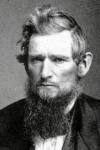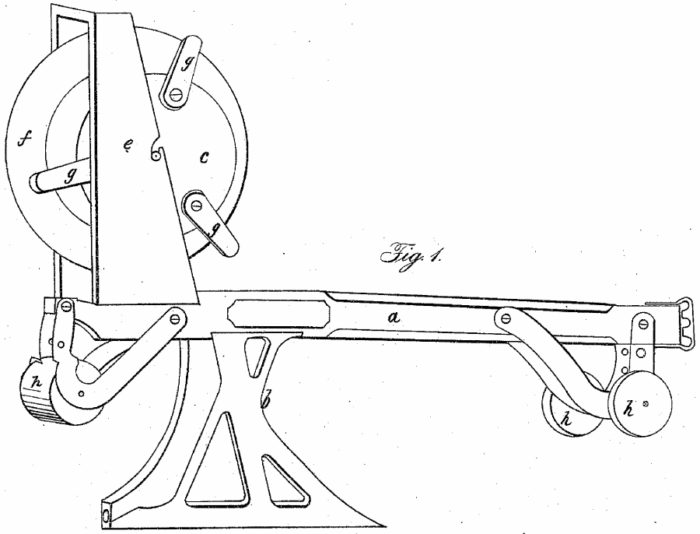
In early 1843, Samuel Morse had been given $30,000 to put his experiments in long-distance communication into practical use. His idea was to connect two cities in the United States with his wires, and allow messages to travel back and forth instantaneously. And what better pair than Washington D.C. and Baltimore? Separated by only some 40 miles, with a right of way – in the form of the Baltimore & Ohio railway line – readily accessible, it was an easy decision for Morse.
The next question was how the wire was to be laid. An inventor in Ithaca, NY, Ezra Cornell [pictured above], had developed a machine that made the laying of underground cable easy. A team of two to four oxen pulled a plow that dug a trench into which the lead pipe could be unrolled and then allow the walls of the trench to collapse over the newly laid pipe.
Morse attempted this with a 20-inch deep trench, and managed to lay wire about a quarter of the distance to Baltimore, at a rate of of about three miles a day. Unfortunately, tests on the line showed that the connection was not working, so Morse had to come up with another way of connecting the cities. He looked across the Atlantic, where there had been some success with above-ground wires on poles, and this is what Morse ended up trying: 23 foot high Chestnut poles set about 200 feet apart, approximately the size and spacing used today for telephone poles.

By early May, the wires reached from the Capitol to Annapolis Junction. It was immediately used to report from the Whig convention currently taking place in Baltimore and in Washington the correspondent of the New York Herald wrote up this momentous occasion, in a piece written on May 1, 1844:
By this Telegraph we also learned that Mr Clay had been this day nominated for President, and Mr. Frelinghuysen of N.J. for Vice President. Professor Morse has politely given me a part of the paper on which the news is contained , which I send you. It contains the words “Frelinghuysen,” with the (g) left out through haste, and was written with a pen twenty-two miles long. [Emphasis in original]
Sadly, for those readers in New York waiting for news on this momentous occasion, they were to read it only on May 3, once the letter had made its slow way to New York.
It would take another three weeks for the wires to reach the B&O station in central Baltimore (today the B&O museum) On May 25th, the Baltimore Patriot reported
Morse’s Elector Magnetic Telegraph now connects between the Capitol at Washington and the Railroad Depot in Pratt, between Charles and Light-streets, Baltimore. The wires were brought in yesterday from the outer depot and attached to the telegraphic apparatus in a third story room in the depot warehouse building. The batteries were charged this morning and the telegraph was put in full operation, conveying intelligence to and from the Capitol.
Next week: The first “intelligence” to be conveyed.
